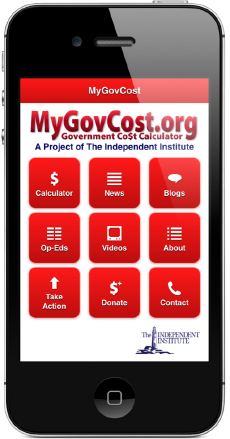On Wednesday, the US Supreme Court overruled the $123,000 cap on what any individual may donate to federal candidates over any two-year election cycle, on the grounds that the cap violates First Amendment free-speech rights.
Although this ruling leaves the $2600 limit per candidate intact, it is a big step in the right direction. However, I would submit that the case against campaign contribution limits is even stronger in terms of Freedom of the Press than it is in terms of Freedom of Speech per se.
Narrowly construed, Freedom of Speech is your right to express your opinion to those within earshot (subject to impartial noise abatement restrictions), without fear of prosecution. But the framers of the Bill of Rights realized that in order for your opinion to have a chance at being effective, you must also have the right to mechanically reproduce it. In the 18th century, this meant printing leaflets, pamphlets, newspapers and books, though today this obviously extends to electronic media as well.
Now printing up pamphlets etc. requires money that increases with the size of the run. Unfortunately, not everyone has the resources to print up and distribute a million copies of their little book or pamphlet. However, a law that restricted the circulation of a newspaper to say 1000 copies or its budget to $100,000 per year in order to be “fair” to competitors that no one wants to read would obviously violate Freedom of the Press.
Freedom of the Press gives you the right to use your own resources as you see fit to propagate your ideas, even if you happen to have more resources than someone else. It does not just apply to established organizations with access to White House “press passes,” but to anyone with the cash to pay a printer or TV station to support a particular policy or political candidate. It does not give you the right to use other peoples’ resources acquired through taxation or theft, but just your own, legitimately obtained resources.
If there are other individuals who share your political views, you will probably be more effective if you combine your resources and coordinate your efforts by forming a campaign committee, political party, or political action committee. Although the US Constitution makes no explicit mention of the Freedom of Association, the Supreme Court has in the past ruled that it is implicit in the First Amendment, most notably in the 1956 case NAACP vs. Alabama. (See, e.g., Wikipedia).
Any restriction on individuals’ campaign contributions, whether to individual candidates, political parties, or PACs, is therefore an abridgement of the Freedom of the Press, if not of the Freedom of Speech. Sadly, only Justice Clarence Thomas favored removing all restrictions on political contributions in Wednesday’s decision.
The bizarre 2010 Citizens United case threw out limits on political spending by corporations and unions but not by individuals. Surely any rights corporations and unions have derive from the personal rights of their shareholders or members and therefore cannot exceed those rights. Although corporations are “fictitious persons” for the purposes of owning property, incurring debt, and entering contracts, they are obviously not real persons themselves. In particular, although corporations should (under the Freedoms of Association and of Petition) have the right to lobby concerning legislation or regulations that will directly affect their business, it does not seem unreasonable to block publicly traded corporations with an explicitly commercial purpose from overt political contributions to candidates or political parties, so long as their shareholders are free to contribute to explicitly political organizations directly and without limit.
In the past, wealthy individuals like H. Ross Perot and Donald Trump who legitimately want to use their abundant resources to influence public policy have had no choice but to submit themselves as candidates in order to bypass campaign contribution limits. Removing individual campaign contribution caps will allow such individuals to delegate their efforts to others, without having to inflict themselves on the voters.
Disclaimer: The author is not an attorney, but an economist. More learned comments are welcome!
Stamp image h/t natcom.com.






